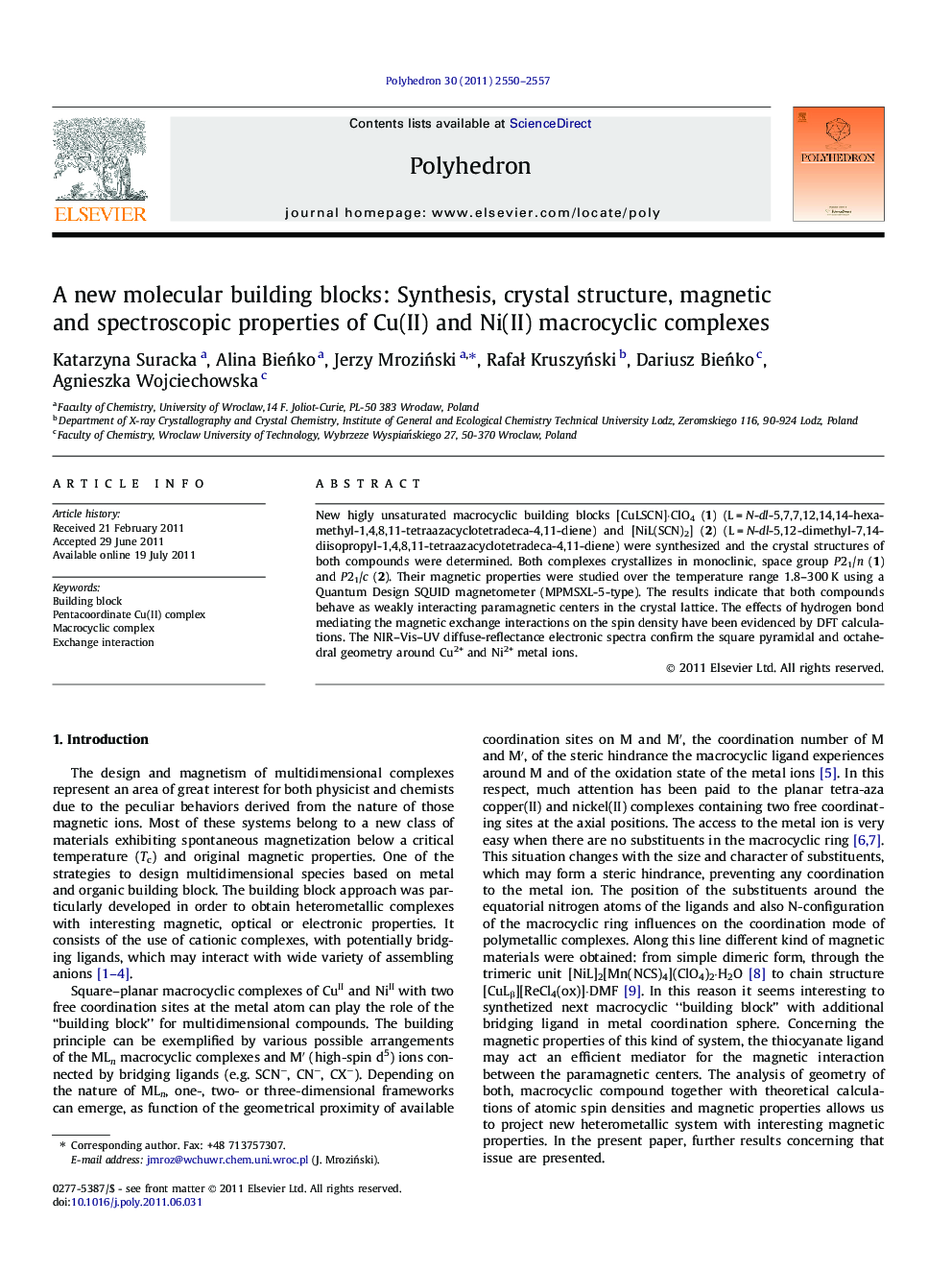| Article ID | Journal | Published Year | Pages | File Type |
|---|---|---|---|---|
| 1334829 | Polyhedron | 2011 | 8 Pages |
New higly unsaturated macrocyclic building blocks [CuLSCN]·ClO4 (1) (L = N-dl-5,7,7,12,14,14-hexamethyl-1,4,8,11-tetraazacyclotetradeca-4,11-diene) and [NiL(SCN)2] (2) (L = N-dl-5,12-dimethyl-7,14-diisopropyl-1,4,8,11-tetraazacyclotetradeca-4,11-diene) were synthesized and the crystal structures of both compounds were determined. Both complexes crystallizes in monoclinic, space group P21/n (1) and P21/c (2). Their magnetic properties were studied over the temperature range 1.8–300 K using a Quantum Design SQUID magnetometer (MPMSXL-5-type). The results indicate that both compounds behave as weakly interacting paramagnetic centers in the crystal lattice. The effects of hydrogen bond mediating the magnetic exchange interactions on the spin density have been evidenced by DFT calculations. The NIR–Vis–UV diffuse-reflectance electronic spectra confirm the square pyramidal and octahedral geometry around Cu2+ and Ni2+ metal ions.
Graphical abstractCrystal packing of [CuLSCN]·ClO4 (L = N-dl-5,7,7,12,14,14-hexamethyl-1,4,8,11-tetraazocyclotetradeca-4,11-diene).Figure optionsDownload full-size imageDownload as PowerPoint slideHighlights► CuII and NiII macrocyclic complexes as new molecular building blocks. ► Weakly interacting paramagnetic centers indicate by magnetic measurements. ► DFT calculation evidence the pathway of the magnetic exchange interactions. ► Good precursors in design and synthesis high spin magnetic materials.
